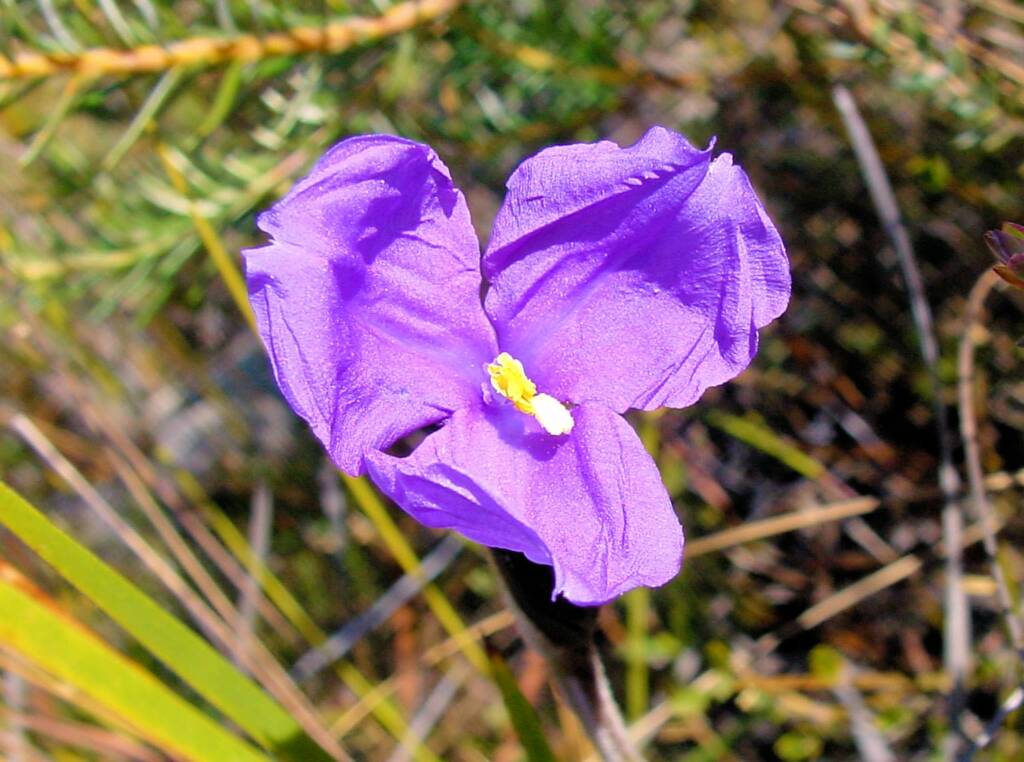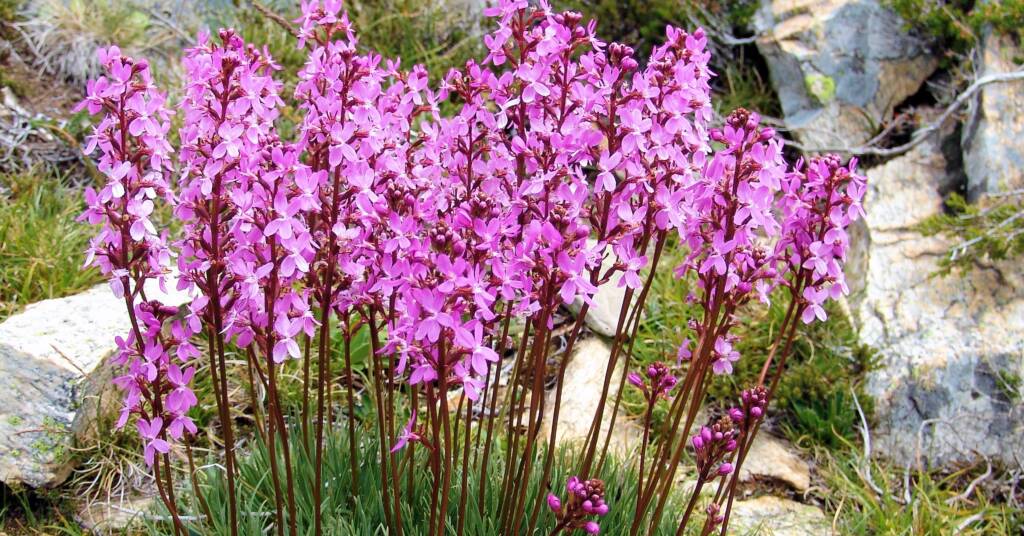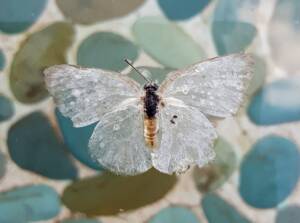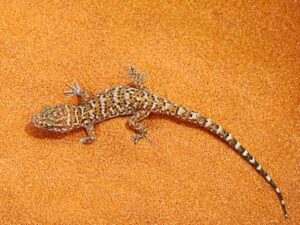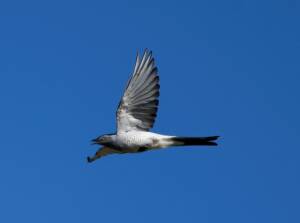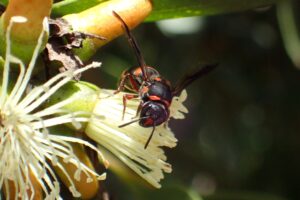ACT | NSW | NT | SA | TAS | VIC | WA | Wildflowers Central Australia | Mass Wildflower Displays | Non Indigenous Plant Displays
Australia has some of the most unique flora in the world and is a magnet for many visitors both locally and from overseas. One of the memorable spectacular events are the natural wildflower displays throughout Australia, such as those in Western Australia and Central Australia – the seasons, especially spring and summer, bringing the flowers out throughout the country. The following information will give you an insight into the wild flowers and flora displays of Australia.
Coming soon… ‘Snapshots from Australia – Wildflowers and Flora’, Floral Emblems of Australia, Central Australia Wildflowers, Mass Wildflower Displays and more…
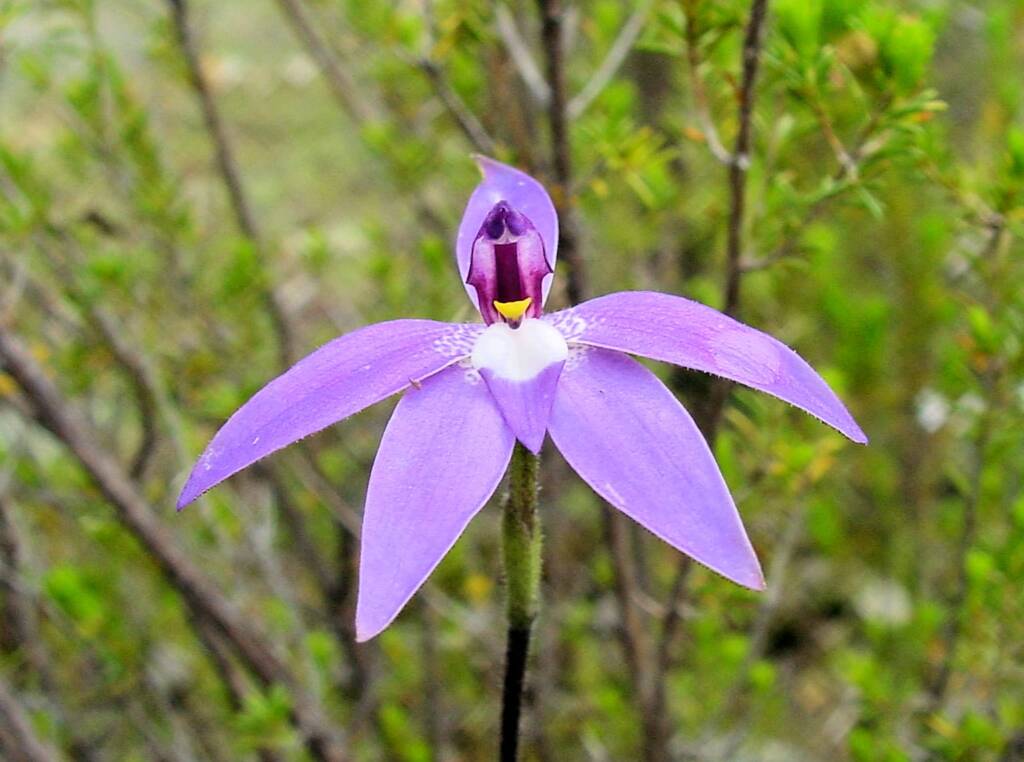
There are many ways to get to see the wildflower display, from tour groups, including 4WD and coach tours, and self-drive tours. Some information is provided here and in the Wildflower Links section, but don’t forget to check out our Travel Agent, Tours and Links to the many operators throughout this site.
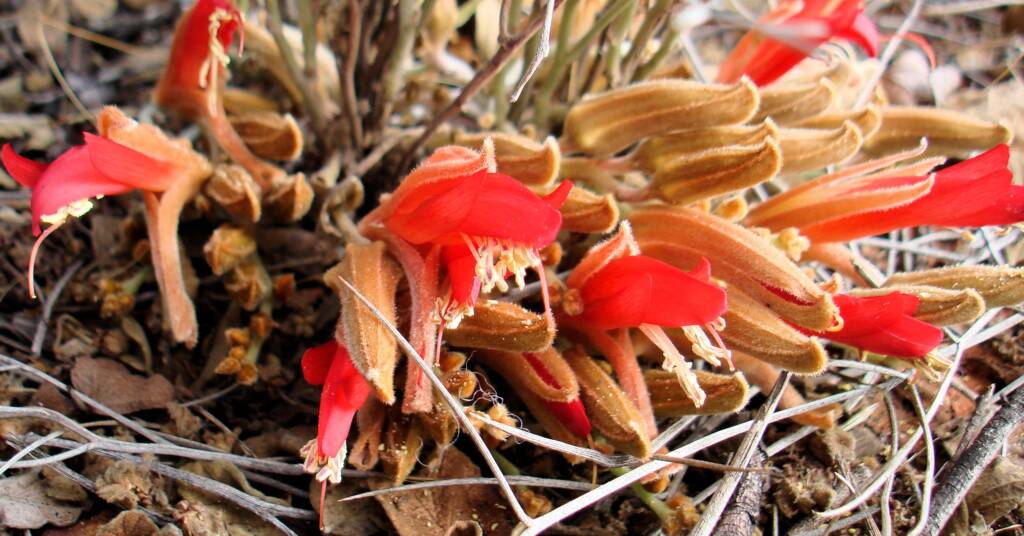
Australian Capital Territory • Wild Flowers
Floriade Festival • Commonwealth Park
• Annual from September to November
Springtime in the Australian Capital Territory brings one of Canberra’s major yearly festivals, and although not technically wildflowers it is definitely worth checking out this celebrating of the coming of spring. Over 1 million bulbs are planted each year, and each year often celebrates a different theme.
The Canberra Floriade Festival is inspired by the Dutch Keukenhof flower display and the Netherlands’ Flower Exposition (Holland’s Floriade), the latter being held every 10 years.
You can be sure that this wonderful floral display will be a kaleidoscope of colours, offering some fantastic photo opportunities, as well a month of entertainment, daily workshops and performances.
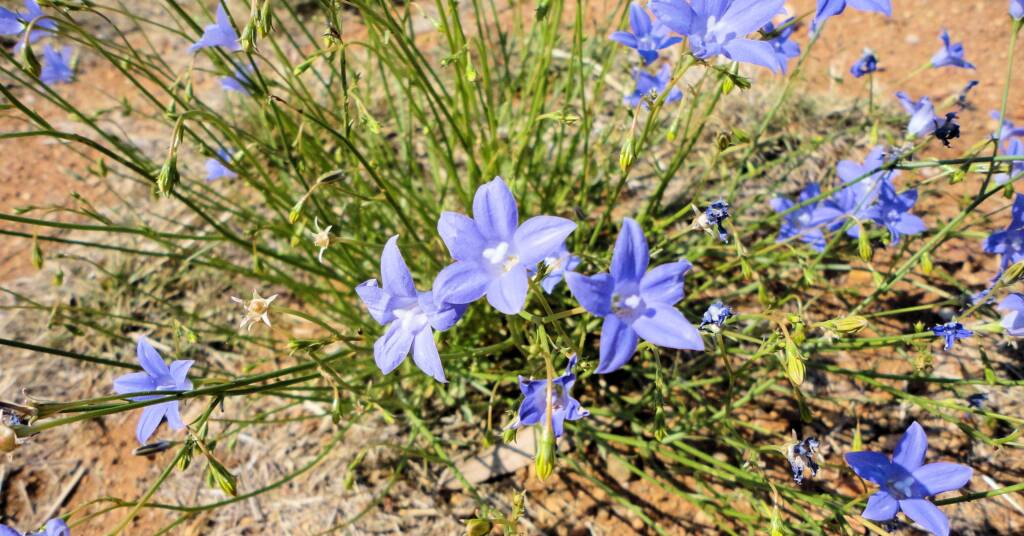
New South Wales • Wild Flowers
Spring is a good time to visit New South Wales National Parks and Reserves, to witness the new growth and floral displays. Scenic places extend through the Blue Mountains, across to the NSW many parks and reserves extending to and along the coastal regions. Contact the NSW National Parks and Wildlife Service or any of the local tourism visitor centre for more information.
For those looking to see the New South Wales state floral emblem, the Waratah, these beautiful flowers occur in forested areas, more commonly seen growing in the Blue Mountains region, along forested slopes and ridges. Can also be seen cultivated in a number of botanic gardens, including the Blue Mountains Botanic Garden.

Northern Territory • Wild Flowers
The Northern Territory is often referred to as the ‘Top End’, although the Top End is centred around the capital of Darwin, with ‘Central Australia‘ region being centred around Alice Springs. With two very distinct regions, there is opportunity to see a huge array of flora. Check out some of the wildflower images for Central Australia and Bush Food.
Other places to view the wonderful flora of the region include: Alice Springs Desert Park and Olive Pink Botanic Garden. Check out our Wildflowers – Flora of Central Australia and Mass Flowering of Central Australia.

South Australia • Wild Flowers
Stretching from the Bass Strait in the south and the beautiful wilderness of the Kangaroo Island, from coastlines through limestone and wine country, the mighty Murray River and Riverland, into the encompassing environment of the Flinders Ranges, through arid landscape up to Central Australia and the border of the Northern Territory, South Australia provides a backdrop to some wonderful plants and wild flower.
With the floral emblem of South Australia, the Sturt’s Desert Pea (Swainsona formosa), seen growing along highways and outback roads as you travel north, South Australia provides access to some wonderful national parks and botanic gardens from which to experience the beauty of their wildflowers. A great place to view some of the plants to be found in the region is the Arid Lands Botanic Garden, showcasing a range of arid zone environments across more than 200 hectares.
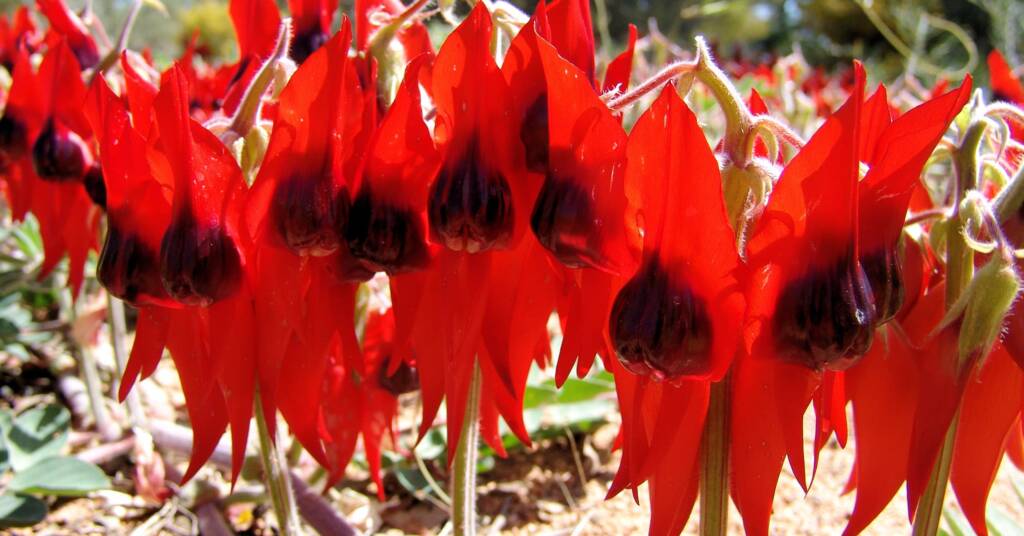
Tasmania • Wild Flower
Tasmanian waratah (Telopea truncata) is a spring flower (November-January) and common throughout the state. Christmas bells (Blandfordia punicea) are found December-February, from the coast to the mountain slopes. Tasmania is also renown for it’s multi-million dollar poppy industry, grown for pharmaceutical purposes. Often seen in the north west, north east, midlands, east coast, Derwent Valley and south east regions due to the better soil conditions, visitors can see the fields of light pink flowers when they are in full bloom. Please note that entering the poppy fields is against the law, and possession of poppy material is an offence with fines, imprisonment, or both.
Tasmania NORTH-WEST
Spring is the best time to see the coastal heaths in full bloom. Things to see are:
- Arthur River — drive south of the in late October and early November for the display of coastal flowers. Flowers include the purple Melaleuca and Tetratheca and the pink Bauera rubioides.
- Asbestos Range National Park — abundant display of wildlife and wild flowers.
- Cradle Mountain — above Dove Lake is a World Heritage Area. A must visit, all year round, it is a vast alpine region with summer wildflowers. Waratahs can also be seen here.
- Dial Range at Penguin — mass of spring flowers, particularly at the northern end (starting at Ferndene).
- Dove Lake — discover the alpine rainforest.
- Rocky Cape National Park — the Banksia forest overlooks the sea and heathland, variety of spring and summer flowers (September-January). Late spring to see the Christmas Bells (Blandfordia punicea).
- Waldheim — visit in late November to see a great display of red Waratah on the roadsides leading to Waldheim. Myrtle trees also liven the bush with coppery foliage and Mountain Rockets put up their candle flowers. Christmas time there are scented pink boronias and yellow ground-hugging Golden Guinea, Christmas Bells and pink Trigger plants.
Tasmania NORTH EAST
The north coast lights up in spring with the wildflowers, with flowering wattles everywhere:
- Ben Lomond National Park — spectacular views over northern Tasmania from this high dolerite plateau. Tasmanian waratah (telopea truncata) can also be seen (November-January) on the Ben Lomond Road. There are fine display of summer wild flowers.
- Granite Point Coastal Reserve, Bridport — on Anderson Bay, north-east of Launceston, has a scenic coastline bursting with spring wildflowers. The Bridport Wildflower Reserve also offers scenic views and wildflowers. The Waterhouse Protected Area extends along the coast east of Bridport.
- Launceston to George Town, Greens Beach or Badger Head on the West Tamar — spring flowers line the way, with orchids nearer the coast.
- Liffey Falls Reserve — beautiful waterfalls set in a small fern-filled valley.
- The Trevallyn State Recreation Area, includes Lake Trevallyn and the South Esk River — a pleasant bushland area with spring flowers.
- Mount Barrow Reserve — nice walking tracks for spring.
- Mount William — coastal heathlands are also flowering August-October, with Wattle (acacia dealbata and acacia melanoxylon) also during spring.
- Waterhouse Reserve — spectacular Grass Tree with cream-coloured flower spikes up to 3 m high.
Tasmania EAST COAST
- Douglas/Apsley National Park — drive to the southern entrance for both spring and summer flowers in a dry eucalypt woodland.
- Freycinet National Park — a must in spring time, from September, with huge varieties of pinks, purples, yellows and whites. Coastal heathlands are also flowering August-October, with Wattle (Acacia dealbata and Acacia melanoxylon) also during spring. Summer is for purple Melaleuca and Tetratheca pilosa, yellow Hibbertia riparia and the yellow rock orchids.
Tasmania SOUTH
- Mount Field National Park — a year-round display of mountain berries, scarlet Climbing Heath, lemon-scented Boronia citriodora and the red fruit of Mountain Rocket. Late spring for the display of massed waratahs (Telopea truncata) and from July-November to see wattles in bloom. March-September for the Tasmania snow gum (Eucalyptus coccifera), especially around Lake Fenton.
- Mount Wellington — Snow gums, Pineapple Grass, Tasmanian Waratahs, Snow Daisies and Gentians are all in bloom. Late spring for the Mountain Lilac or Christmas Bush, especially along Pinnacle Road. White needle leaf Hakea, unusual Dragon Heath with its long terminal flower spikes above palm-like leaves and Golden Rosemary, are also in bloom.
Tasmania SOUTH-EAST
Blue gums (Eucalyptus globulus) are spring flowering (September-December) and found widespread in the south-eastern region:
- Lime Bay — spring and early summer for orchids and coastal flowers, including the Native Indigo and many yellow and yellow-brown pea flowers.
- Labillardiere Peninsula — in South Bruny National Park, is carpeted with flowering heath during spring and early summer. The spotted sun orchid is one of many spectacular orchids found here.
- Maria Island — flowering blue gums in the spring.
- Remarkable Cave — the centre for coastal heath.
- South Bruny National Parks — spring flowering blue gums.
Tasmania SOUTH-WEST
The south-west is home to tall wet eucalypt rainforests, with massed displays of Silver Wattle in early spring. Amongst the buttongrass plains, flowers are at their best during summer, and of special interest is the double Trigger Plant.
- Hartz Mountains National Park — November-January to see displays of waratahs (Telopea truncata), snow gums and alpine heath.
Tasmania WEST
- Derwent Bridge — mid-November has a great flowering purple longifolia amidst the last of the yellow Richea procera, white heath and golden Everlasting Daisies.
- The Lyell Highway to Queenstown — traverses some of Tasmania’s best scenery, including tall forests of white stringy bark gums. The famed Leatherwood (Eucryphia lucida), flowering in the spring (January-March), can be seen in the Wild Rivers National Park (Franklin River Nature Trail).
- Lake St Clair — a drive to the lake for the start of the famous Overland Track through swamps of Green Bottlebrush and tall forest with summer flowers and summer-autumn berries.
- Murchison Highway north of Tullah — offers fantastic display of waratah and the famous Leatherwood (Eucryphia lucida), from mid November to March.
- Zeehan — on the drive to Zeehan are flowering tea trees and heath decorate, early Summer.
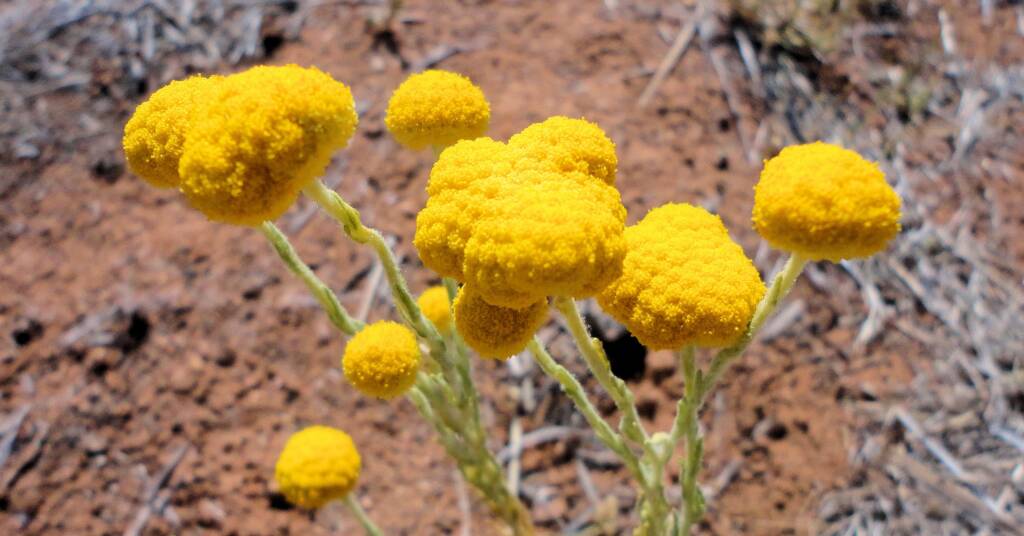
Information on plants in Tasmania can be found on the Department of Primary Industries, Water and Environment and the Tasmania Parks and Wildlife Service websites.

Victoria • Wild Flowers
The Common Health (Epacris impressa) is a shrub that grows up to a 2 metres in height, however along the coastal habitat the slender shrub is usually less than a metre in height. A native to the south-east corner of Australia, it is found growing in the coastal heathlands, montane and sub-alpine regions. The Common Health can be found growing along the north coast and east coast of Tasmania, and along the coastline from Clyde River in New South Wales, along the Victoria coastline, to the Mount Lofty Ranges in South Australia. In Victoria it is also found in the adjoining foothills, the Grampians and the Little Desert.
It was in 1793 that the French botanist, Jacques-Julien Houton de Labillardiere during his voyage with Bruny D’Entrecasteaux on the unsuccessful search for the missing explorer, La Perouse, who collected the Common Heath in Tasmania.
The Common Health comes in a number of colours from white, pale pink, rose pink, crimson and scarlet. There is also a rare double flower form. It is the pink form of the Common Heath that was proclaimed on the 11 November, 1958 as the floral emblem of Victoria.
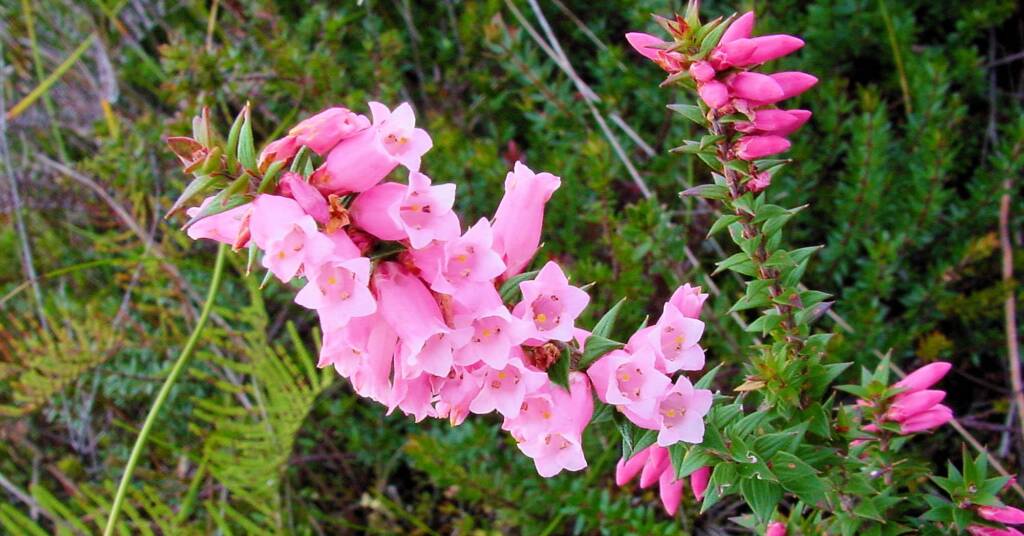
Western Australia • Wild Flowers
One of the more popular and unique attractions in Western Australia is the wildflowers. Found throughout the south-west of WA, there are several botanical zones where they appear, based on the climate and the type of woodland. Most of the “everlastings” wildflowers are found in the semi-arid zone, with visitors flocking to the areas north-east of Perth, between Wubin, Mullewa and Mount Magnet. With many local varieties yet to be named, the wildflowers seasons vary depending on the areas visited and the time of year. There are coach tours, safari tours, as well as self-drive holidays, that can take you through massive expanses of carpeted coloured landscapes.
This is not to say that the rest of WA is lacking in plants, as Western Australia is world renowned as one of the botanical ‘hotspots’, rivalling that of South Africa’s Cape and Namaqualand regions. The region around Lesueur National Park has lateritic uplands, the Stirlings and parts of the Fitzgerald River National Park have quartzite hills. Within these regions there are areas of sandy heathland, that have a large variety of flowering plants. You can be sure that every spring, this remote corner of Australia bursts into magnificent blooms, with wild flowers carpeting the landscape. The wildflower show moves slowly southwards with the warming weather of spring. The peak periods for the everlastings and the flowers of the Lesueur region, usually begin from mid-August to mid-September, although the Stirling and Fitzgerald River displays in the south, can last up to six weeks longer.
Remember, when travelling to this region, that there is a great distance between destinations. Mullewa is 450 km and Mount Magnet is 570 kms north of Perth. The Stirling Range is 400 kms south, with the Fitzgerald National Park a further 100 km south. Not all roads are sealed and there is limited accommodation, so book ahead.
What can you expect to see? Depending on the time of year, and region you can be sure to see any of the papery everlastings; the yellow balls and catkins of the mimosa; spear blossoms of the grass trees (Xanthorrhoea); sprays of white blossom of the smokebush; the many cones and cylinders in colours ranging from creams, yellows, reds and burgundy browns of the banksia and bottlebrush; southern cross; the combs, spikes and sprays of grevilleas; hakea; the many unique orchids such as the ‘Queen of Sheba’ and the variety of spider orchids; the massed ‘egg and bacon’ colours of the pea family creepers; the lechenaultia in vivid red or pastels of yellow and pink; miniature purple blossoms of the melaleucas. Make sure you pick up some information from anyone of the local tourist information centres.
- Perth — a tour can start from the capital of Western Australia, where you can visit King’s Park, a reserve of native forest and bushland, that enjoys great views, and Botanical Gardens. It offers to those unfamiliar with Australian flora a perfect introduction to the many families of plants and trees endemic to Australia — acacias, banksias, eucalypts, grass trees, grevilleas, and hakeas. There are also wildflower displays at Bold Park, Hepburn Heights, Star Swamp, Brixton St, Wireless Hill, John Forrest NP, Yanchep, and The Scarp. Check out the Wildflower Society of WA for more information including guided walks and where to see wildflowers.
- Dryandra State Forest — protects many eucalypt species and associated flora. It also is home to many important birds and mammals, including the striped Numbat.
- Fitzgerald River National Park — famous for a bewildering diversity of plants, over 1,300 species. You can explore the heaths, wetlands and mountains, as well at the spectacularly coloured Royal Hakea (Hakea victoria), the region’s best known plant.
- Kalbarri National Park — herein lies the dramatic red Murchison Gorge, rolling sand plains and sea cliffs, a geologic formation dating back 400 million years and now home to over 500 species of plants. The tall flowering stems of Grevillea leucopteris and G. annulifora amongst the grey flowers of the smoke bush (Conospermum) make an unforgettable picture.
- Moresby Ranges and Mullewa — home to the Leschenaultia macrantha. Much of this vast region has been cleared for farm crops, but enough natural habitat remains for a full colourful production of the everlastings (Helichrysum spp).
- Nambung National Park — the magnificent Pinnacles Desert, is a strange region in which thousands of limestone pinnacles rise, forest-like, from the coloured sands.
- Northern Kwongon — a sand plain heath, supporting sweeping vista of brightly coloured flowers.
- Stirling Range National Park — rises to 1,000 metres from the coastal lowlands, and is part of an isolated mountain system formed over 1,000 million years ago. There is a range of plants not found elsewhere, including many orchid species.
- The forested south-west region of Western Australia’s — is home to the towering, pale-barked Karri Trees (Eucalyptus diversicolor), one of the world’s tallest trees.
Image (featured at top): Grass Trigger-plant (Stylidium sp.), Mount Kosciuszko, NSW © Ausemade PL


